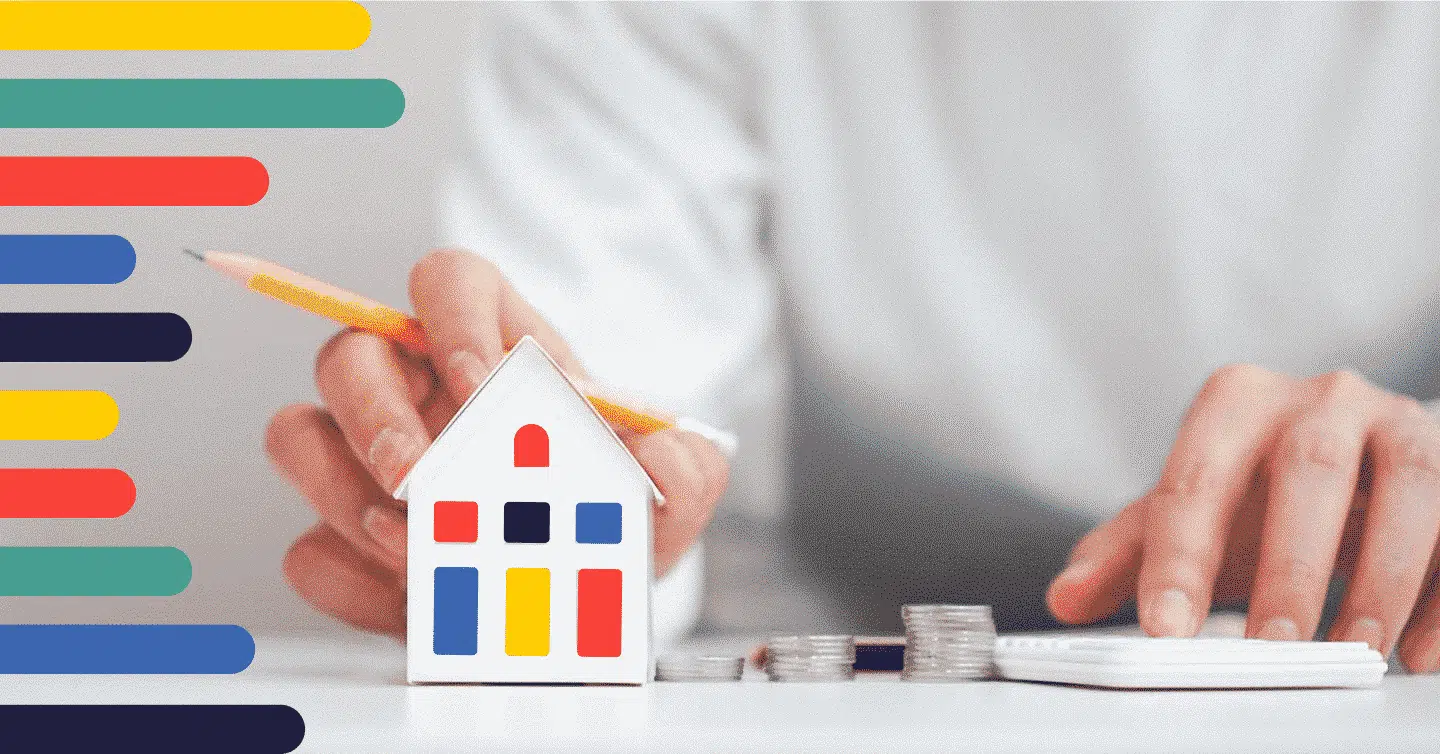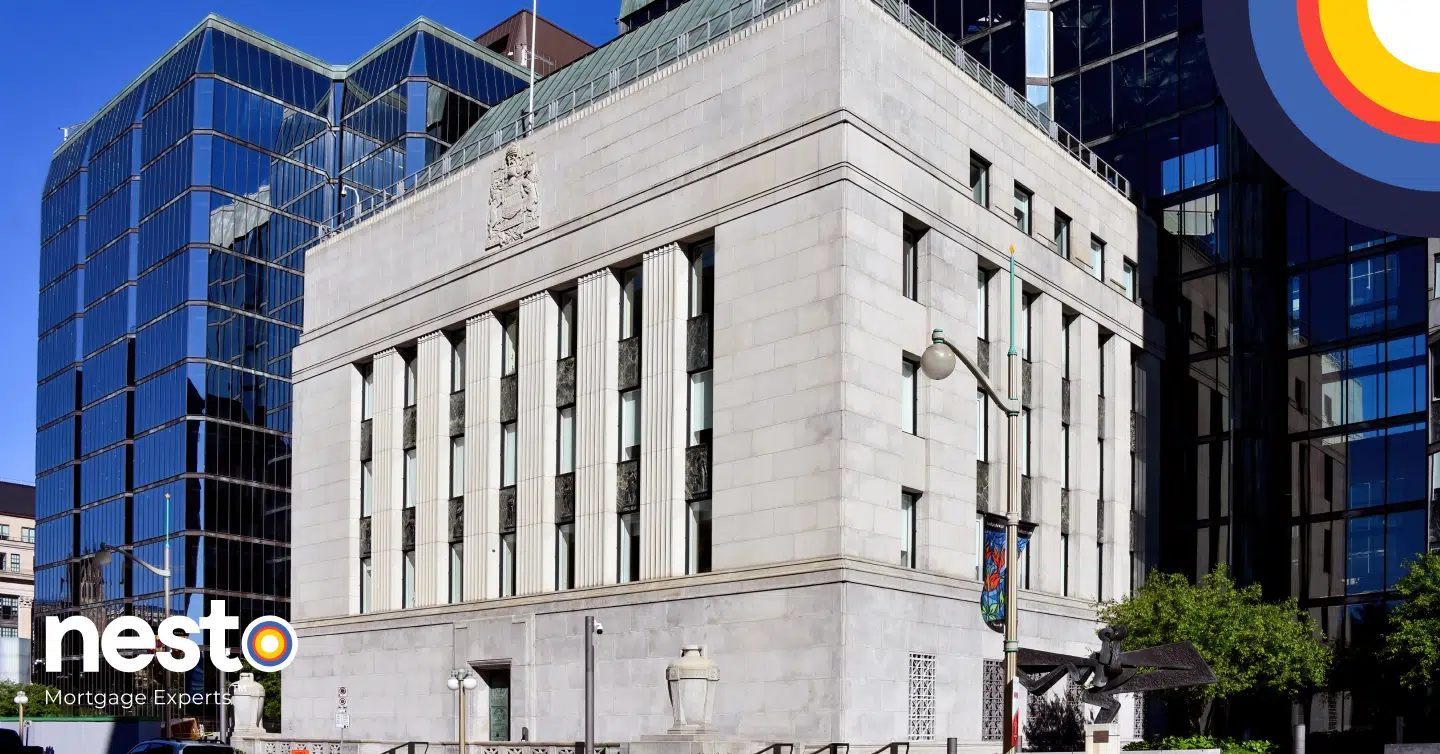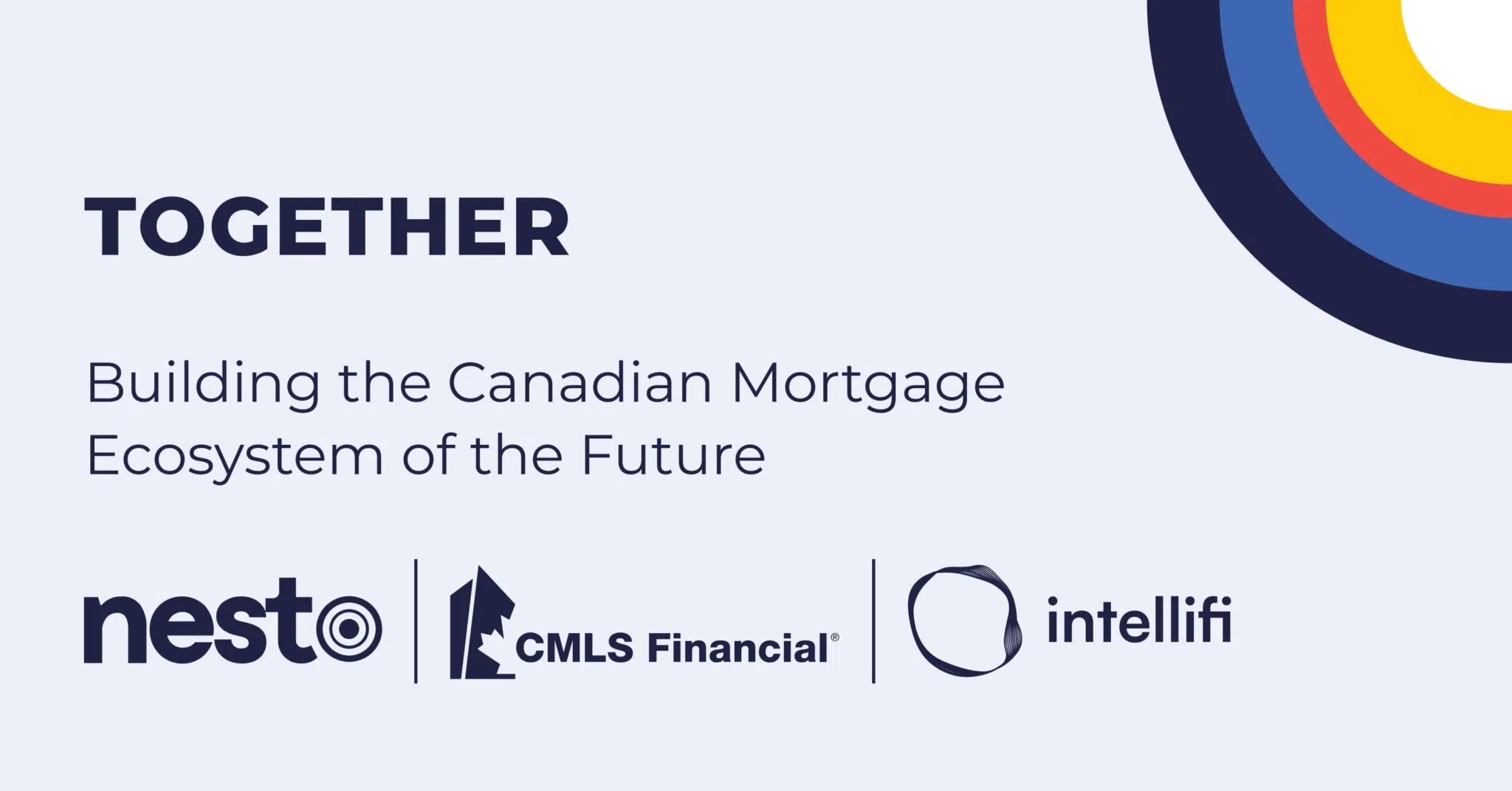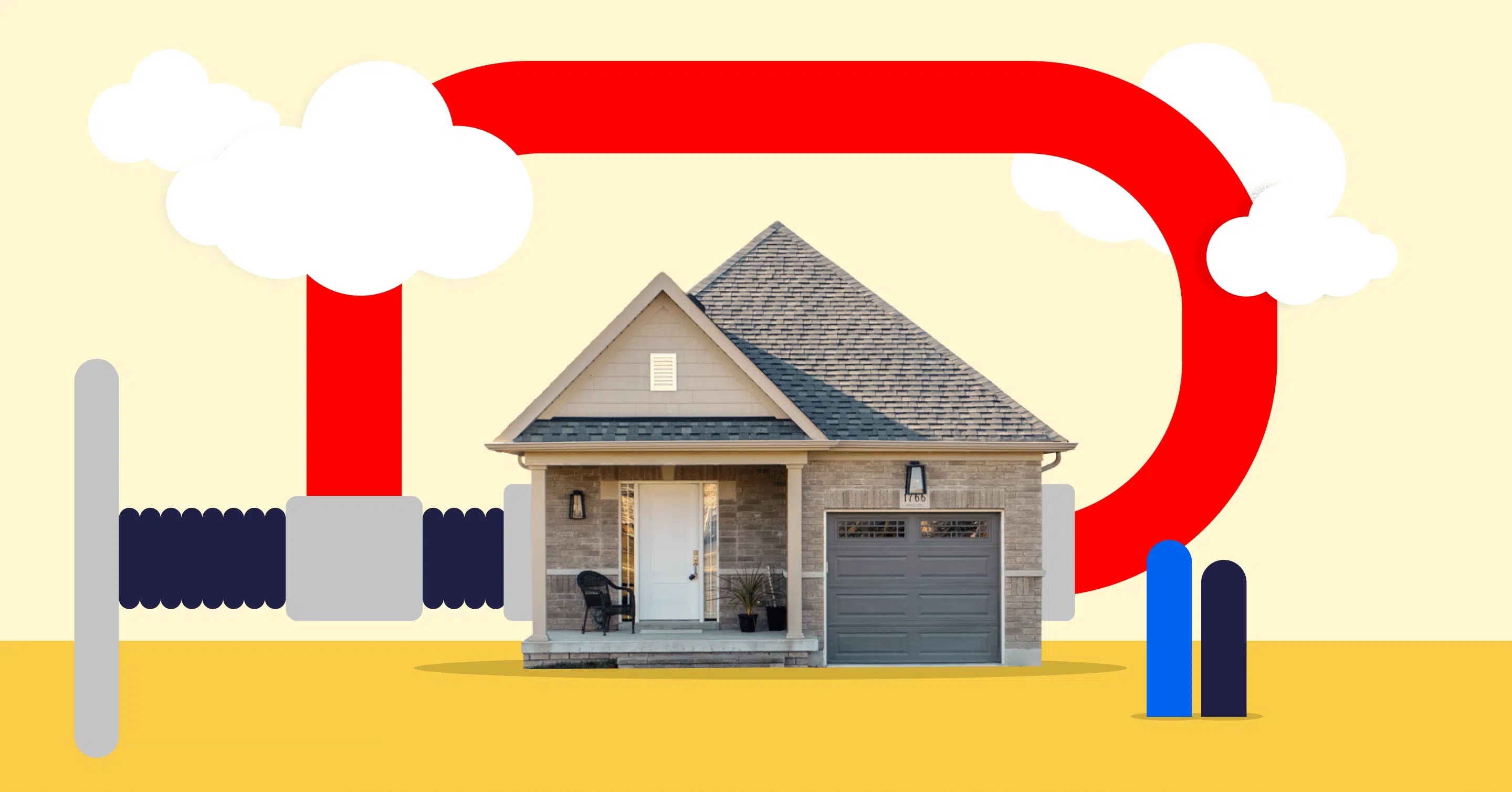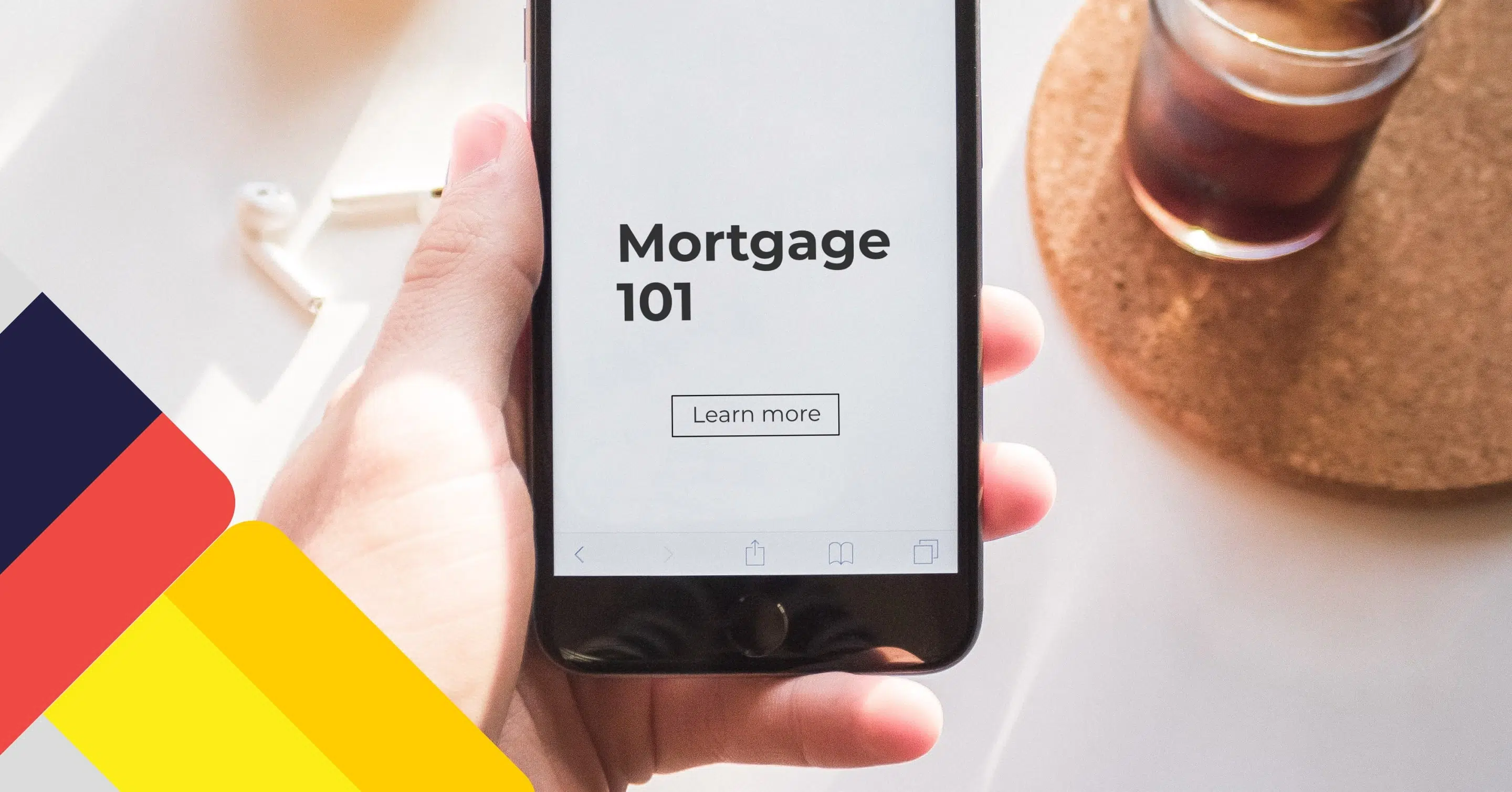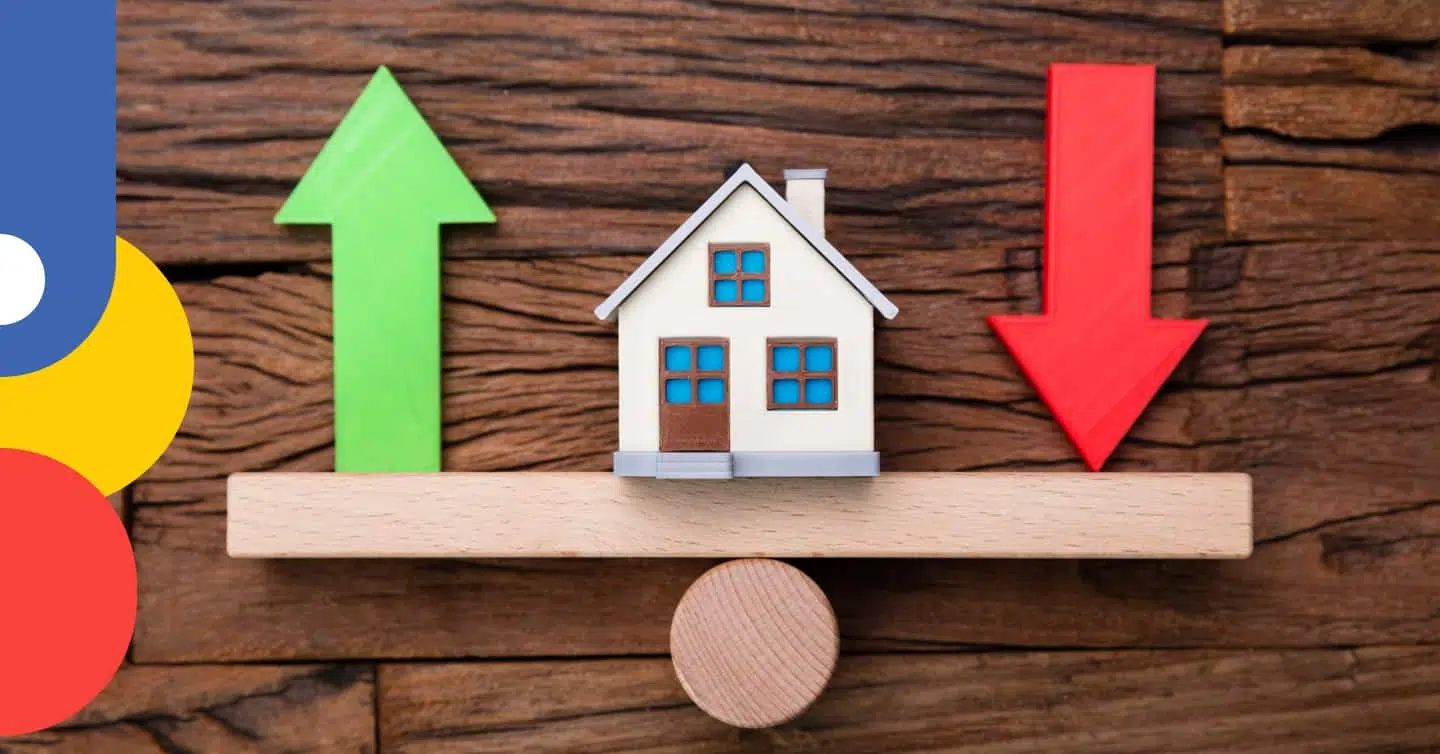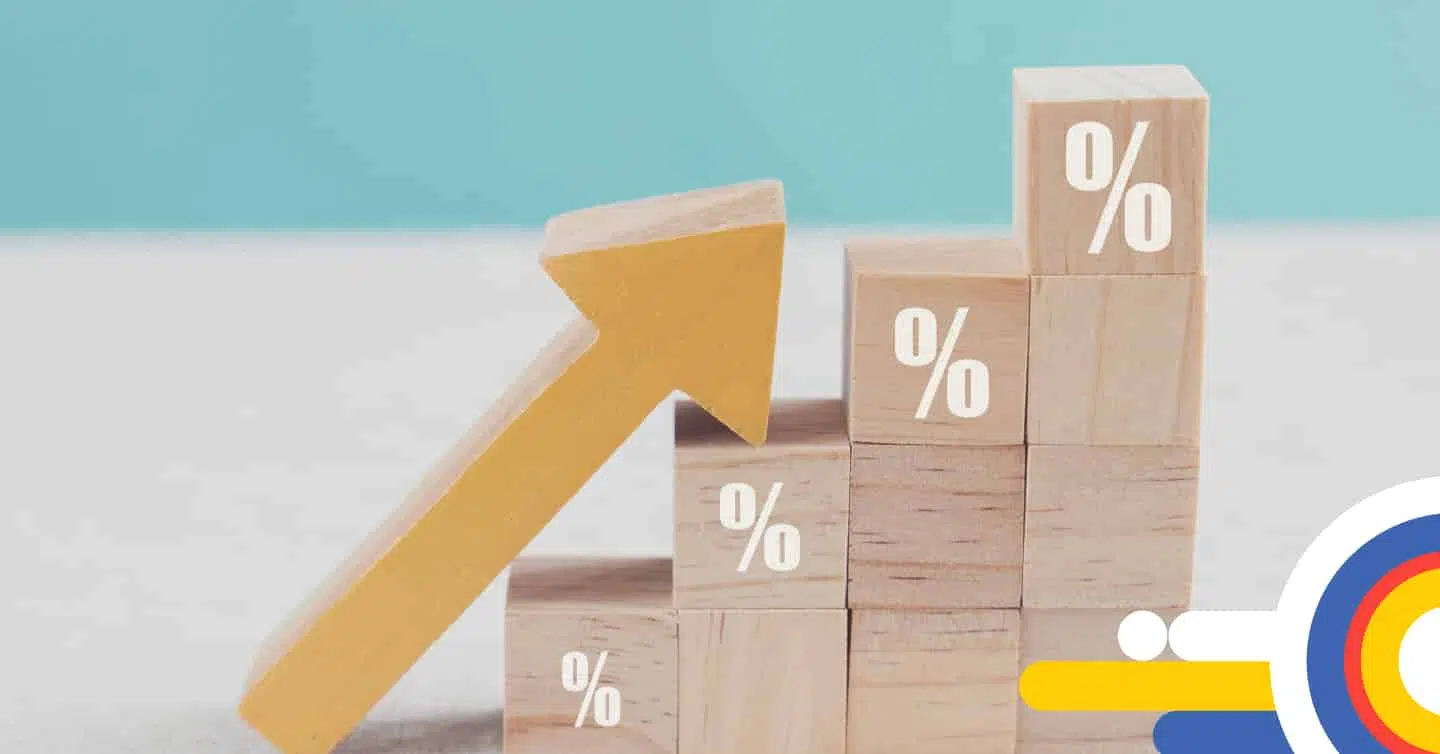For visualization purposes. Speak with a mortgage expert for complete accuracy. Terms & conditions apply.
Mortgage Payment Shock Calculator
A significant number of Canadians are set to face payment shock, with 60% of mortgages coming up for renewal in the next 3 years. This means many homeowners will face much higher mortgage payments at renewal unless interest rates decrease significantly over the next few years. This unexpected increase in financial obligations can be stressful if you’re unprepared.
What is Payment Shock?
Payment shock is a sudden and substantial increase in mortgage payments. Payment shock typically occurs when mortgage rates increase in quick succession or a mortgage is renewed at a much higher rate. The most significant impact of payment shock is the financial strain on homeowners’ budgets.
What Causes Payment Shock?
Payment shock doesn’t just occur when you renew your mortgage. Several other causes of payment shock can negatively impact your finances.
Rate Changes at Renewal
One of the primary causes of payment shock is rate changes at renewal. Most mortgages renew after 5 years (the most popular term), and you must renew your mortgage at current interest rates. If rates have increased significantly since you first obtained the mortgage or since your last renewal, this can substantially increase your mortgage payments, causing payment shock.
Adjustable-Rate Mortgages
Adjustable-rate mortgages (ARM) have payments that fluctuate based on changes to lender prime rates. When interest rates increase or decrease, an ARM payment will adjust, either increasing or decreasing, to account for changes in interest rates while the principal portion remains the same. If interest rates increase, you will immediately feel the effects through higher mortgage payments. This could lead to payment shock if rates continue to increase, causing your mortgage payments to increase much higher than your initial payments.
Escrow Account Adjustments
Some homeowners may choose to have their property taxes included with their mortgage payments. When a lender collects property taxes along with regularly scheduled mortgage payments, the portion of property taxes made is held in an escrow account. There may be times when this account doesn’t have enough to cover the total property taxes owed for the year.
If property taxes increase, most lenders will allow the escrow account to go negative and re-adjust mortgage payments after the current year’s property tax payments are made. The re-adjustment will account for the repayment of any negative balance and will budget enough to cover the new property taxes, increasing your mortgage payments in the process. Property taxes can significantly increase due to municipal budget increases or property value reassessments leading to payment shock.
Changes in Mortgage Terms
To significantly change your mortgage terms, you must complete a mortgage refinance. With a refinance, you will break your current mortgage and sign on for a new one at current interest rates. If rates are significantly higher than your current interest rate, you could face payment shock when refinancing.
How to Calculate Payment Shock
Understanding how to calculate payment shock can help you plan ahead for changes to your budget. The payment shock calculation method you use will depend on the type of scenario you face.
Calculating Payment Shock at Renewal:
To calculate payment shock at renewal, you will need to compare your current mortgage payments with what they will be at renewal. The difference will be expressed as a percentage to illustrate the shock you will realize once your payments change.
Payment Shock = (New Payment – Old Payment) / Old Payment * 100
Calculating Payment Shock for Adjustable-rate Mortgages:
For adjustable-rate mortgages, you will need to compare your original mortgage payment at the onset of your mortgage term to the new payment each time rates change. This difference is calculated as the adjustment to your mortgage payment with each increase to your lender’s prime rate.
Payment Shock = (New Payment – Original Payment) / Original Payment * 100
Calculating Payment Shock When Changing Mortgage Terms:
When changing mortgage terms, you will calculate the difference between your current mortgage payments and those made under the new mortgage. The percentage change will be the payment shock you will realize once you are on your new mortgage rate.
Payment Shock = (New Payment – Old Payment) / Old Payment * 100
Today’s Best Mortgage Rates as of July 15, 2025
The Great Renewal: How 60% of Canadian Mortgages are at Risk of Payment Shock in 2024-2026
A significant number of Canadians are set to renew mortgages over the next 3 years. Around 60% of outstanding mortgages at chartered banks are estimated to be coming due between 2024 and 2026. RBC’s Imagine Capital Markets Report on Canadian banks and mortgage payment shock estimates that just over $900 billion in mortgages will be up for renewal over the next 3 years.
CMHC estimates that 45%, or 2.2 million mortgages, will be up for renewal between 2024 and 2025. This figure represents nearly 40% of the Canadian economy’s gross domestic product (GDP). These borrowers will face the most significant interest rate shock as many secured record low interest rates between 2020 and 2021 during the pandemic and will most likely renew at 23-year highs.
To put this into perspective, if you secured an interest rate at nesto in August 2020, you could have secured a 5-year fixed rate at 1.79%. This would put you up for renewal in August 2025. If interest rates don’t come down before then, you could be looking at an interest rate of around 4.74% using today’s lowest 5-year rate at nesto.
Using this data, if you originally had a $500,000 mortgage with a 25-year amortization and a 5-year term at 1.79%, your monthly mortgage payments would be about $2,067, and you’d have approximately $417,000 remaining on your mortgage when you are renewing your mortgage in 2025. At renewal, your mortgage payments at a 4.74% interest rate would increase to $2,682.
($2,682 – $2,067) / $2,067 *100 = 29.75%
When you renew, your monthly mortgage payments could increase by $615 ($7,380/year) as you realize a 29.75% mortgage payment shock. Even though your mortgage balance decreased, your mortgage payments have increased without any effective change to your amortization schedule. If fixed rates moved higher before your renewal, you risk a much higher payment shock.
How Canadians Can Reduce Their Payment Shock
Despite the looming threat of payment shock if your mortgage is up for renewal in the next few years, there are several strategies you could take to lessen the impact on your finances.
- Increase mortgage payments – Increasing your mortgage payments before your term ends, especially if you have a lower interest rate today, will help you pay down more principal on your mortgage. This could lower your remaining mortgage amount when you come up for renewal and help offset some of the increase in payments you will face if rates remain high.
- Make a lump sum prepayment – Similar to increasing your mortgage payments, a lump sum payment will go toward the principal on your mortgage. This could reduce the remaining mortgage amount when you come up for renewal and help offset some of the impacts of higher interest rates.
- Extend your amortization – Extending your amortization will spread out your mortgage payments over a longer timeframe, helping offset some of the costs of higher interest rates. However, this option will mean you pay more in interest-carrying costs over the life of the mortgage.
- Shop around for the lowest rates – Shopping around and switching lenders for a lower rate could save you thousands in interest-carrying costs. nesto provides a hassle-free way to help you find the lower rates.
- Select an adjustable-rate or short-term fixed-rate mortgage – Locking into a 5-year fixed rate when rates are at all-time highs could mean you miss out on savings if rates decrease. Choosing an adjustable-rate mortgage (ARM) will allow you to realize immediate savings if interest rates start to come down. However, if you prefer predictable and stable payments, a short-term fixed-rate mortgage could help you secure a lower rate when you come up for renewal in the next few years.
How Payment Shock Compares Against the Big Banks
The impact of payment shock can vary depending on your mortgage lender and the interest rate you currently have. Many of the major banks have been vocal about the risk of payment shock and have increased their financial buffers to hedge against any potential loan defaults that may occur. However, most borrowers prioritize their mortgage payments over other debt repayments, investing and spending, so the risk of defaults remains relatively low.
If you originally obtained a $500,000 mortgage in 2019 on a 5-year fixed rate with a 25-year amortization at an interest rate of 2.83%, your monthly mortgage payments would be approximately $2,323. When your mortgage matures at the end of your 5-year term in 2024, you will have approximately $426,000 left on your mortgage balance.
The tables below illustrate the payment shock you would experience when renewing your outstanding mortgage balance of $426,000 at each of the big 6 banks using today’s rates and compare how much you could save by switching from the big banks to nesto.
RBC Payment Shock
| RBC | nesto | |
|---|---|---|
| Mortgage Amount (at renewal) | $426,000 | $426,000 |
| Interest Rate | 5.59% | 4.74% |
| Previous Monthly Mortgage Payment | $2,323 | $2,323 |
| New Monthly Mortgage Payment | $2,937 | $2,740 |
| Difference in Payments | $614 | $417 |
| Payment Shock | 26.43% | 17.95% |
| Monthly savings with nesto | $197 or 32.08% |
TD Bank Payment Shock
| TD | nesto | |
|---|---|---|
| Mortgage Amount (at renewal) | $426,000 | $426,000 |
| Interest Rate | 5.60% | 4.74% |
| Previous Monthly Mortgage Payment | $2,323 | $2,323 |
| New Monthly Mortgage Payment | $2,939 | $2,740 |
| Difference in Payments | $616 | $417 |
| Payment Shock | 26.52% | 17.95% |
| Monthly savings with nesto | $199 or 32.31% |
CIBC Payment Shock
| CIBC | nesto | |
|---|---|---|
| Mortgage Amount (at renewal) | $426,000 | $426,000 |
| Interest Rate | 5.64% | 4.74% |
| Previous Monthly Mortgage Payment | $2,323 | $2,323 |
| New Monthly Mortgage Payment | $2,948 | $2,740 |
| Difference in Payments | $625 | $417 |
| Payment Shock | 26.90% | 17.95% |
| Monthly savings with nesto | $208 or 33.28% |
BMO Payment Shock
| BMO | nesto | |
|---|---|---|
| Mortgage Amount (at renewal) | $426,000 | $426,000 |
| Interest Rate | 5.14% | 4.74% |
| Previous Monthly Mortgage Payment | $2,323 | $2,323 |
| New Monthly Mortgage Payment | $2,832 | $2,740 |
| Difference in Payments | $509 | $417 |
| Payment Shock | 21.91% | 17.95% |
| Monthly savings with nesto | $92 or 18.07% |
Scotiabank Payment Shock
| Scotiabank | nesto | |
|---|---|---|
| Mortgage Amount (at renewal) | $426,000 | $426,000 |
| Interest Rate | 5.66% | 4.74% |
| Previous Monthly Mortgage Payment | $2,323 | $2,323 |
| New Monthly Mortgage Payment | $2,953 | $2,740 |
| Difference in Payments | $630 | $417 |
| Payment Shock | 27.12% | 17.95% |
| Monthly savings with nesto | $213 or 33.81% |
National Bank Payment Shock
| National Bank | nesto | |
|---|---|---|
| Mortgage Amount (at renewal) | $426,000 | $426,000 |
| Interest Rate | 5.59% | 4.74% |
| Previous Monthly Mortgage Payment | $2,323 | $2,323 |
| New Monthly Mortgage Payment | $2,937 | $2,740 |
| Difference in Payments | $614 | $417 |
| Payment Shock | 26.43% | 17.95% |
| Monthly savings with nesto | $197 or 32.08% |
Frequently Asked Questions
When are most Canadians up for mortgage renewal?
Most Canadians will renew their mortgages in 2026, with approximately $400 billion or 26% of chartered bank mortgages due for renewal.
How many Canadian mortgages are at risk of payment shock?
Economists and policymakers predict that slightly more than $900 billion worth of mortgages may experience payment shock at renewal. This accounts for around 60% of all mortgages held at chartered banks set to be renewed from 2024 to 2026. Most Canadians are expected to renew their mortgages in 2026, with about $400 billion, or 26% of chartered bank mortgages, up for renewal.
According to CMHC, around 2.2 million Canadian mortgages, approximately 45% of all outstanding mortgages, will need to be renewed between 2024 and 2025. When these borrowers renew their mortgages, interest rates will be significantly higher, as many of these mortgages were secured at record-low interest rates between 2020 and 2021 during the pandemic.
As reported by CMHC, around $2 trillion in mortgage debt needs to be paid off. In 2023, only 5% of this debt was up for renewal. This year, 13% of the debt is scheduled for renewal. However, the percentage will increase significantly in the coming years, with 23% in 2025, 31% in 2026, and 21% in 2027.
What is payment shock?
Payment shock occurs when mortgage payments increase suddenly and significantly. A significant reason for mortgage payment shock is higher interest rates upon renewal. Typically, mortgages are renewed every 5 years in Canada, and homeowners must renew at the prevailing interest rates. If rates have increased significantly since the initial mortgage or the last renewal, mortgage payments can substantially increase, resulting in payment shock.
Adjustable-rate mortgages (ARM) have payments that change based on fluctuations in the lender’s prime rates. While the principal of your mortgage remains the same, the interest will adjust to reflect changes in interest rates, either increasing or decreasing. However, this is not true for variable-rate mortgages (VRM), as the mortgage payment doesn’t change with fluctuations in prime rates. Instead, the proportion of the mortgage payment going to principal and interest will change.
If interest rates rise, you will immediately experience payment shock through higher mortgage payments with an ARM. However, changes in the lender’s prime rate on a VRM will not affect your monthly payment, but they will cause the interest to build up by reducing the portion of your monthly mortgage payment to repay your principal. This causes the amortization on a VRM to increase, leading to negative amortization.
When your mortgage experiences negative amortization, the interest component of your mortgage payment surpasses the fixed payment amount. As a result, the excess interest gets deferred and added back to your principal balance. Over time, this causes your balance to grow, and you end up owing more than the original loan amount. When your mortgage is returned to its remaining amortization schedule, you’ll experience a significant payment shock at renewal.
What is renewal shock?
Renewal shock happens when homeowners have to renew their mortgage terms at a significantly higher interest rate than they are currently paying.
Bank of Canada rate cuts will immediately affect variable mortgage holders, as their rates will be lowered with changes to your lender’s prime rate. Most Canadian mortgage holders are likely to experience an increase at renewal time despite the expected relief in interest rates. This is mainly because approximately 70% of existing mortgage borrowers had secured fixed rates at historically low levels during the pandemic. This means that mortgage holders will still face a significant increase in their monthly payments upon renewal.
How can I lessen the impact of rising mortgage rates at renewal?
Several strategies can help lessen the impact of higher mortgage rates at renewal. These include increasing mortgage payments, making a lump sum prepayment, and extending your amortization.
Does payment shock affect first-time homebuyers?
Payment shock can impact first-time homebuyers when they come up for renewal. Many first-time buyers who purchased in 2020 and 2021 and went with a fixed rate will face higher interest rates when their mortgages come up for renewal in the next few years. Further, many buyers during this time chose variable rates and may have already realized payment shock when they hit their trigger points as interest rates increased. Payment shock for first-time homebuyers (FTHB) could also be viewed as the change in housing costs – expressed as a difference between renting versus homeownership.
How do mortgage lenders calculate payment shock?
Mortgage lenders calculate payment shock as the difference between the new and old mortgage payments expressed as a percentage of the old mortgage payment.
Payment Shock = (New Payment – Old Payment) / Old Payment * 100
How is payment shock calculated and analyzed by mortgage underwriters?
Mortgage underwriters calculate payment shock as a percentage difference between new and old mortgage payments compared to the old mortgage payment.
Payment Shock = (New Payment – Old Payment) / Old Payment * 100
Can payment shock lead to mortgage rejection?
Payment shock can result in your mortgage being rejected when switching lenders if your debt servicing ratios are not within your new lender’s lending guidelines. Additionally, if the higher payments are not manageable for your budget, you could miss payments, affecting your credit score and leading to rejections upon renewal.
What is the Great Renewal?
The Great Renewal is a term nesto coined to refer to the massive number of Canadian mortgages expected to be renewed between 2025 and 2029.
At the onset of the pandemic, homeowners used low mortgage rates to renew or refinance their mortgages. Over 30% of homeowners chose to renew into a variable rate instead of the historically popular fixed rate. As mortgage rates were historically low for most of 2020 and 2021, many homebuyers could qualify for a higher mortgage amount to enter the surging real estate market, even more so on a variable rate, as these rates were lower than fixed rates at the time.
Policymakers and analysts expect approximately 50% of all mortgages to come up for renewal in 2025 and 2026. Mortgage interest rates are expected to stay elevated, creating payment shock at renewal time for those borrowers.
Why Choose nesto
At nesto, our commission-free mortgage experts, certified in multiple provinces, provide exceptional advice and service that exceeds industry standards. Our mortgage experts are non-commissioned, salaried employees who provide impartial guidance on mortgage options tailored to your needs and are evaluated based on client satisfaction and advice quality. nesto aims to transform the mortgage industry by providing honest advice and competitive rates using a 100% fully digital, transparent, seamless process.
nesto is on a mission to offer a positive, empowering and transparent property financing experience – simplified from start to finish.
Contact our licensed and knowledgeable mortgage experts to find your best mortgage rate in Canada.
Browse Calculators by Location:
- Mortgage Calculator Alberta
- Mortgage Calculator Manitoba
- Mortgage Calculator Newfoundland
- Mortgage Calculator Nova Scotia
- Mortgage Calculator Quebec

